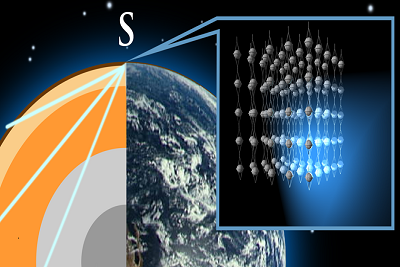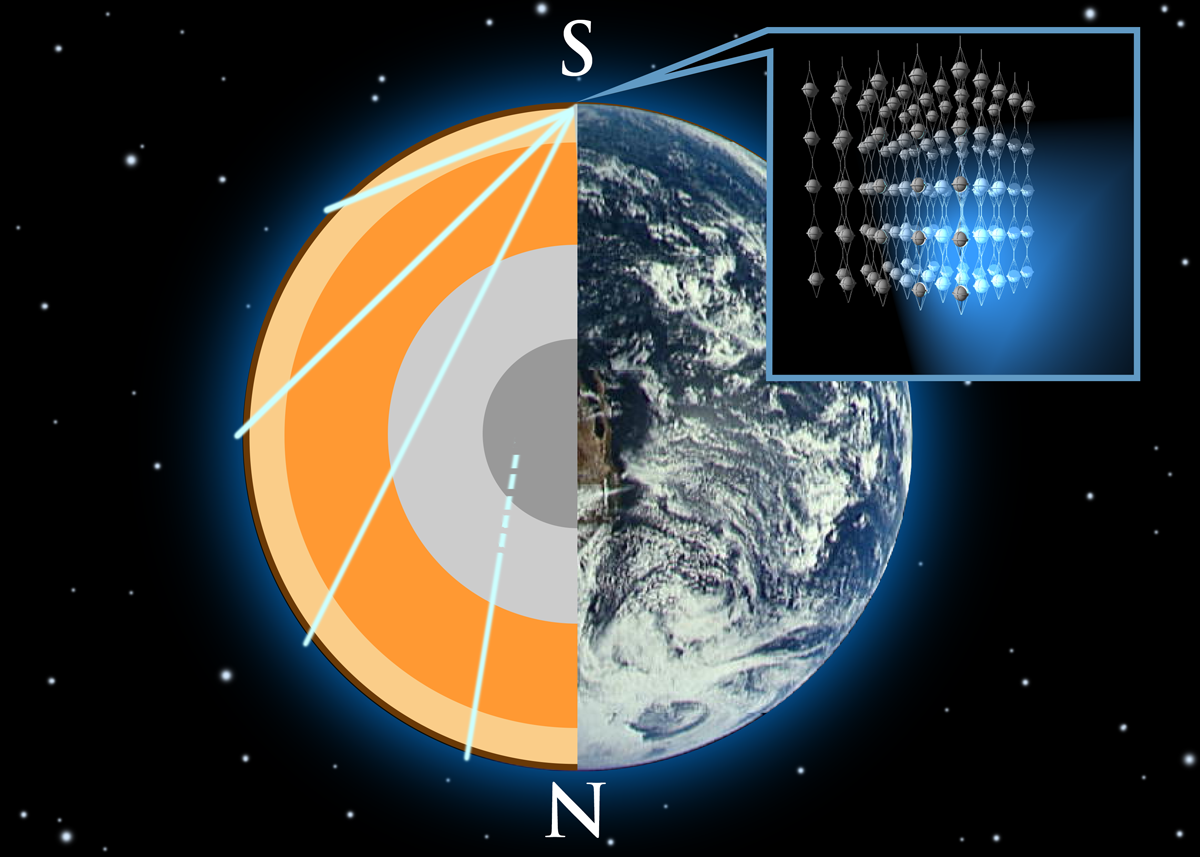Successful measurement of neutrino cross-sectional interaction Large-volume detectors reveal characteristics of multiteraelectronvolt neutrinos


Some neutrinos interact with matter inside the Earth via weak interaction, and generate a secondary charged lepton. The secondary charged lepton drops all energy in the collision matter and vanishes within a few kilometers.
© 2019 Kotoyo Hoshina.
Neutrinos are elementary particles with little mass and no charge. They only interact very weakly with matter. The more we learn about neutrinos, the better we understand the standard model of particle physics. However, due to the weak interactions with matter, it is difficult to detect high-energy neutrinos. Even with high-energy particle accelerators, this has been a challenge for decades. In 2017, the IceCube Collaboration successfully measured the neutrino cross-sectional interaction at multiteraelectronvolts.
The IceCube Neutrino Observatory is an array of photo sensors buried inside a cubic kilometer glacier at the South Pole. Every year, it collects more than 10,000 events induced by high-energy neutrinos originating in the atmosphere or the outside universe, which penetrate the Earth. By counting the deficit of arrival neutrinos due to the absorption by the Earth, the team successfully measured the neutrino cross-sectional interaction at more than an order of magnitude higher in energy than previous measurements.
Some models of neutrino cross-sectional interaction outside the standard model predict dramatically larger cross-sectional energy beyond even petaelectronvolts. After a year of observations, it appears the data is consistent with the standard model. In the near future, with full statistics of data collected by IceCube and other large-volume neutrino detectors currently proposed, more detailed behavior of the neutrino cross-section at higher energies will be revealed.
The Center of High Energy Geophysics Research (CHEER), a department of the Earthquake Research Institute at the University of Tokyo, is performing a new analysis that measures the Earth’s density profile using the cross-section neutrino model based on the standard model of particle physics.
"Neutrinos are very unique, interesting particles, but catching them is always challenging due to the smallness of their cross section," says Kotoyo Hoshina, a project researcher at CHEER who collaborated in the research. She continues, "After the completion of IceCube in 2011, we opened a new window of high-energy neutrino physics. Now we collect neutrinos with energies higher than what researchers can generate with accelerators. We measured the neutrino’s characteristics, observed neutrinos generated elsewhere in our universe, and even try to use neutrinos as a tool to measure Earth’s density. A large-volume neutrino observatory is a tool for particle physics, astronomy, and even could be a tool for geoscience. There are several proposed projects for large-volume neutrino observatories in the world, including a major upgrade of IceCube. I’m excited to imagine the new world revealed by results from such detectors in the near future."
Papers
IceCube Collaboration, "Measurement of the multi-TeV neutrino cross section with IceCube using Earth absorption ," Nature [vol. 551] (2017) [596-600]: November 22, 2017, doi:10.1038/nature24459.
Link (Publication )
)





